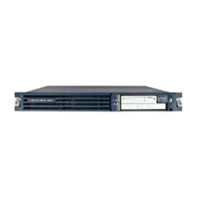Glossary
GL-2
Cisco IOS XR Getting Started Guide
OL-10957-02
C
card type
The type of the card inserted in a slot.
CDP
Cisco Discovery Protocol. CDP runs on all Cisco devices so that these devices can learn about
neighboring devices and exchange information. CDP uses a well-known multicast MAC address.
During system initialization, the application-specific integrated circuit (ASIC) is configured to forward
these packets to the Cisco IOS XR software CPU, which processes the packets.
Cisco.com
The Cisco website
CLI
command-line interface. A text-based user interface to an operating system. A command-line interface
is a user interface to a computer operating system or an application in which the user responds to a
visual prompt by typing a command on a specified line, receives a response from the system, and then
enters another command, and so forth. Typically, most of the UNIX-based systems today offer both a
command-line interface and graphical user interface (GUI). See also GUI.
committed/saved
software
configuration
The configuration stored in the system for a particular node. The RP loads the committed configuration
into memory at startup.
configuration
register
In Cisco routers, a 16-bit, user-configurable value that determines how the router functions during
initialization. The configuration register can be stored in hardware or software. In hardware, the bit
position is set using a jumper. In software, the bit position is set by specifying a hexadecimal value
using configuration commands. A hexadecimal or decimal value that represents the 16-bit
configuration register value that you want to use the next time the router is restarted. The value range
is from 0x0 to 0xFFFF (0 to 65535 in decimal).
control plane
The control plane oversees the operation of the data plane, allocating resources, providing information,
and handling errors to allow data plane operations to be continuous and efficient.
CORBA
Common Object Request Broker Architecture. Specification that provides the standard interface
definition between OMG-compliant objects. CORBA allows applications to communicate with one
another no matter where they are located or who has designed them.
CoS
class of service. An indication of how an upper-layer protocol requires a lower-layer protocol to treat
its messages. In SNA subarea routing, CoS definitions are used by subarea nodes to determine the
optimal route to establish a given session. A CoS definition comprises a virtual route number and
transmission priority field. Repetitive, regularly timed signals are used to control synchronous
processes.
CWI
Craft Works Interface. Graphical user interface (GUI) used to configure and operate a router. The CWI
client runs in a web browser.
D
DDTS
distributed defect tracking system. A method to track software errors and resolutions.
DHCP
Dynamic Host Configuration Protocol. Provides a mechanism for allocating IP addresses dynamically
so that addresses can be reused when hosts no longer need them.

